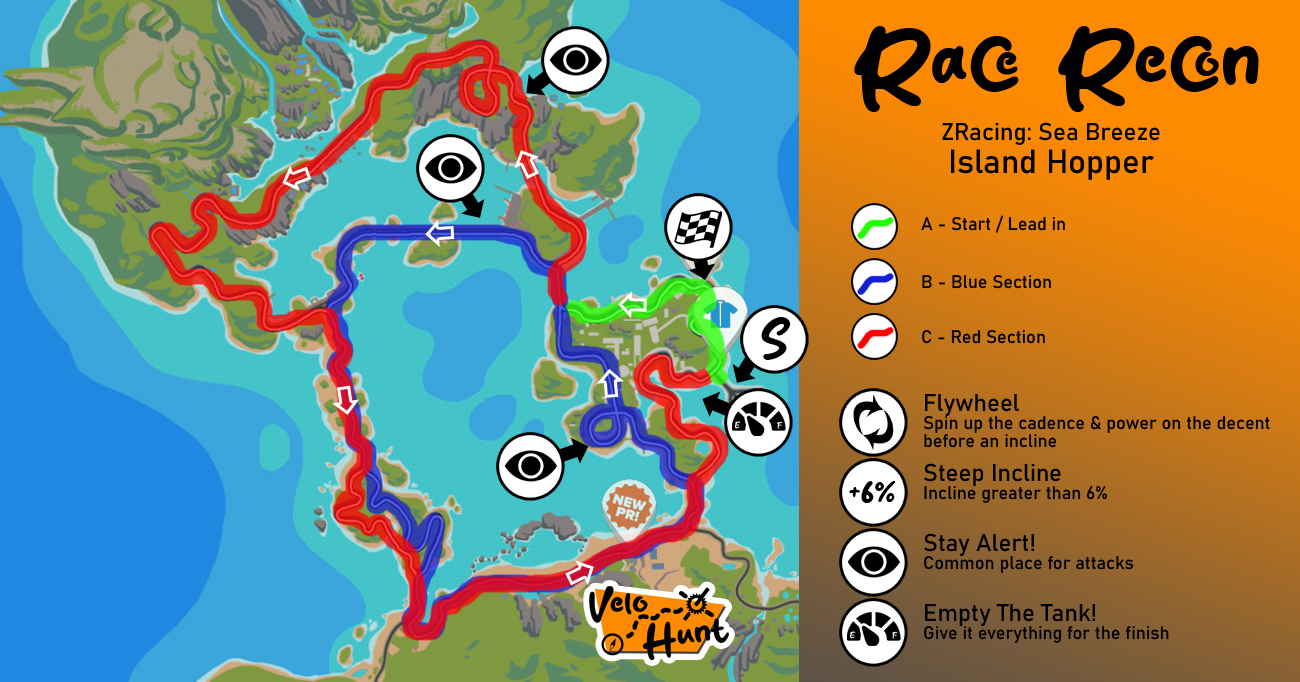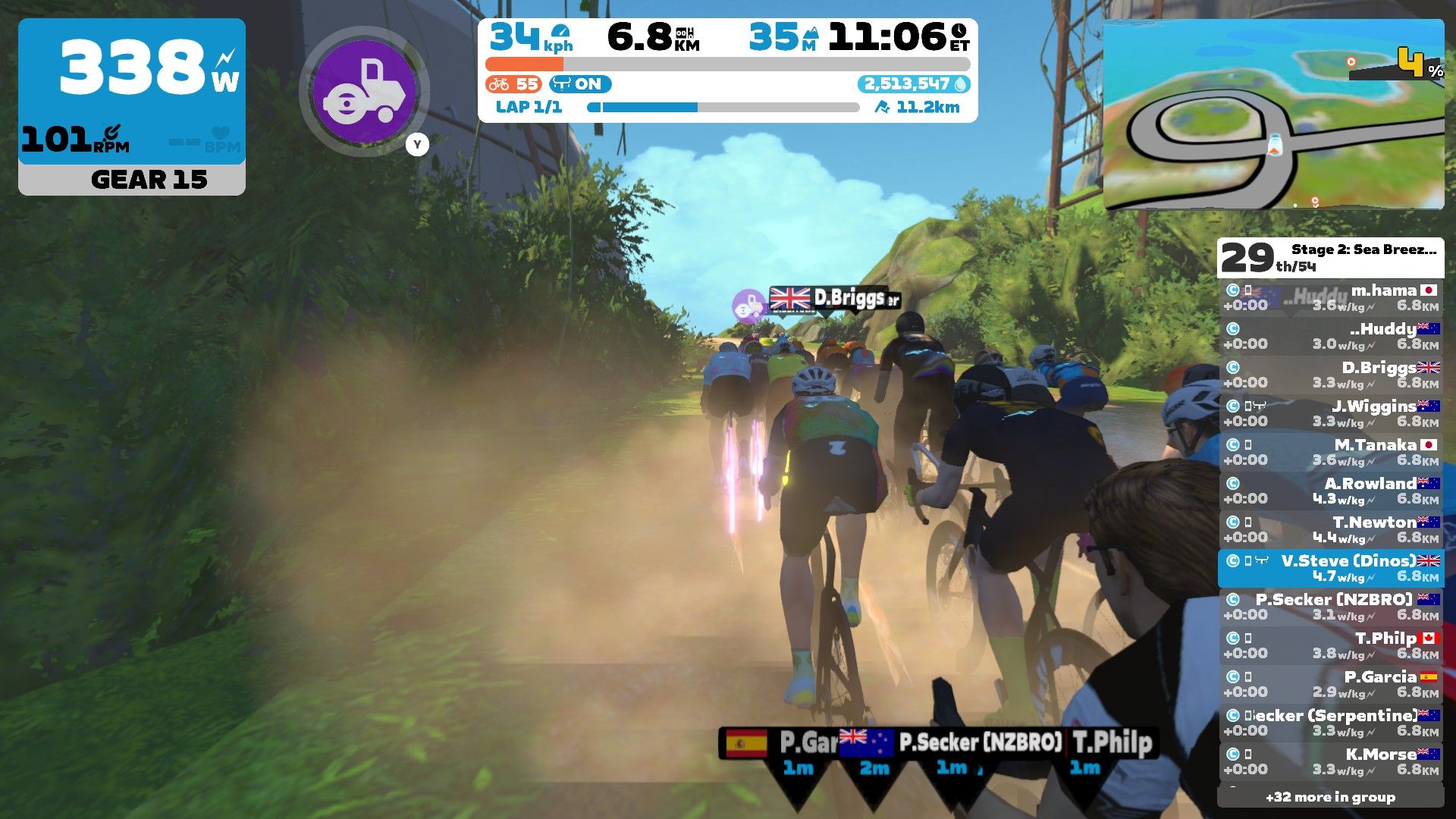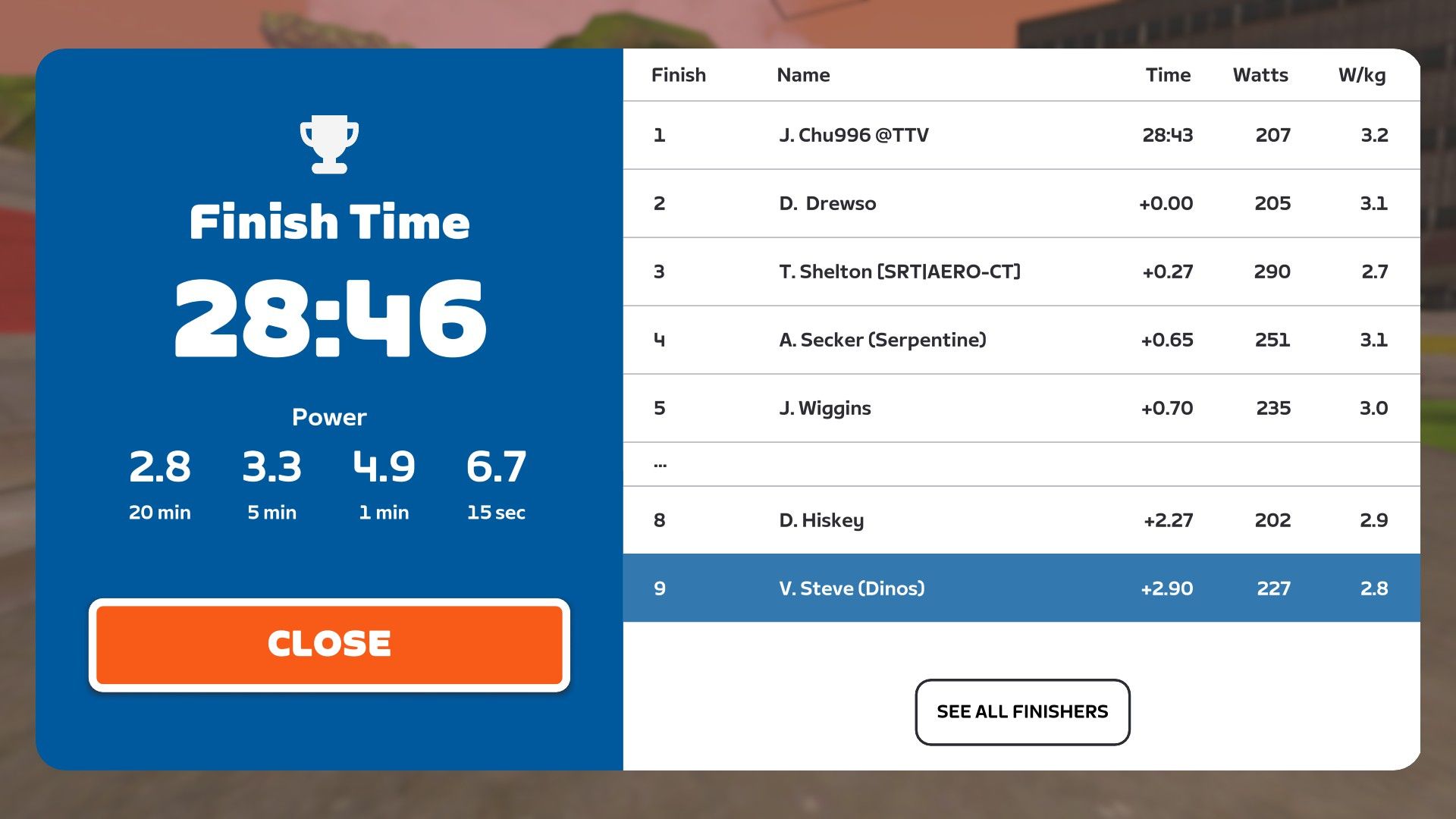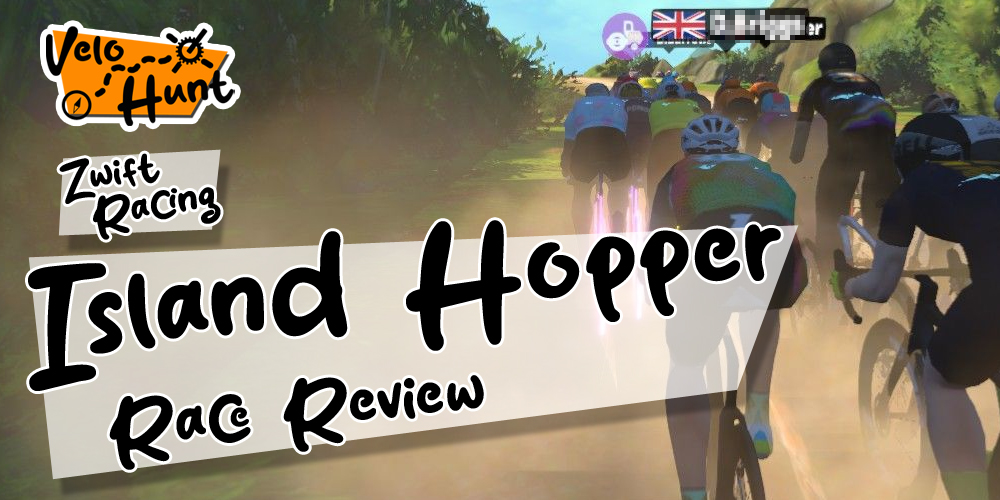The Island Hopper course is set in the picturesque Makuri Island world on Zwift, offering a unique and challenging race experience. This particular race is the second event in the Sea Breeze Z-Racing series and covers just one lap of the route. The Island Hopper is a demanding course, characterized by numerous ramps and climbs that present ample opportunities for strategic attacks. The terrain is diverse, with slower sand sections that can be exploited for breakaways, adding an extra layer of tactical complexity to the race.
Having previously raced this course in the Zwift Race League, I experienced a different format where the race spanned two laps and included sprint points. In contrast, the single-lap format of the Sea Breeze Z-Racing series changes the dynamics significantly, focusing more on sustained efforts and strategic positioning rather than point accumulation. My feelings about the Island Hopper course are mixed. On one hand, the challenging climbs and varying terrain make it an exciting and fun race. On the other hand, the unpredictable nature of the race can lead to varied finishing results, depending on how well one navigates the ramps and manages energy across the different sections.
Overall, the Island Hopper in Makuri Island world offers a thrilling and demanding racing experience, perfect for those looking to test their skills and strategy in the ever-evolving world of Zwift racing. Whether you're aiming for a breakaway on the sandy stretches or an attack on the ramps, this course has something for every racer.
Race strategy for racing on the Island Hopper

For the Island Hopper course in Zwift's Makuri Island world, the choice of bike is crucial due to the extensive sand and gravel sections. I opted for the Tron Z1 (Zwift Concept) bike, which excels in rolling resistance on sandy terrain and performs well on climbs, making it an ideal choice for this challenging route.
Start and Early Sprint: The race begins straightforwardly, but it's essential to stay vigilant at the sandy sprint section at the 2KM mark. This early segment can set the tone for the rest of the race, so positioning and quick reactions are key. In the blue section of the course, marked on my diagram, the ramp starting at 6.7KM is a critical point. Although short, this ramp on sand offers a prime opportunity for quick, tactical attacks. Maintaining momentum here can provide a strategic advantage.
The most significant climb occurs in the red section, beginning at 8.5KM. This climb is 1.5KM long and features a lot of sand/gravel, which makes the 3% average gradient feel steeper due to the lower rolling resistance. Effective pacing and energy management are essential to navigate this section successfully. The race finish offers multiple attack points, making it a thrilling conclusion. If you manage to get the steamroller power-up, consider an early attack during the final sprint. Additionally, there is a small ramp 500m before the finish line, which could be an excellent spot for a late surge. Alternatively, you might opt to conserve energy and unleash a powerful sprint to the line.
Racing on the Island Hopper in Makuri Islands

I made sure to get into the pens early for a solid start, for once I followed my own beginners guide to Zwift racing. Despite feeling great the night before during a zone 2 ride, my legs felt less than stellar for this race. To add to the challenge, my heart rate monitor failed to register on Zwift, which might have given the impression of cheating on Zwift Power. The race kicked off with a strong start off the line. At the sand sprint section, there was a significant attack intended to thin out the pack. I managed to stay with the lead group of about 35 riders, navigating through the early chaos successfully.
The first major ramp, which I anticipated to be intense, turned out to be manageable. While a few riders dropped off, I maintained a safe position at the front. However, the next climb was a different story. A small group pushed hard right from the start. I remained calm and gradually increased my pace, cutting through my group using my Zwift steering technique for overtaking. I had soon bridged back to the 8 leaders by the top of the climb.
As the race neared its end, I found myself in a group of about 15 riders. I chose not to attack during the sprint but waited for the climb. As the group thinned out, I made my move. Initially, it seemed promising, but with 400m to go, one rider overtook me. I tried to counter-attack at 300m, but to my dismay, I had nothing left. Seven other riders passed me as we approached the finish line. After a great race, I was gutted with the outcome.
Is the Island Hopper a hard race on Zwift?
The Island Hopper is a tough but rewarding race, especially if you have solid Zwift race strategies. Without experience, you might find the race quite challenging due to its combination of ramps and sandy sections.
Racing the Island Hopper is a thrilling and demanding experience. While I felt that 95% of my race was executed with perfect strategy, the final 5% finish was a disaster. I still can't decide if it was just bad luck or a mis-judgment on my part. Regardless, the race remains a compelling test of both endurance and tactical skill on Zwift.

|


 VeloHunt Steve
VeloHunt Steve